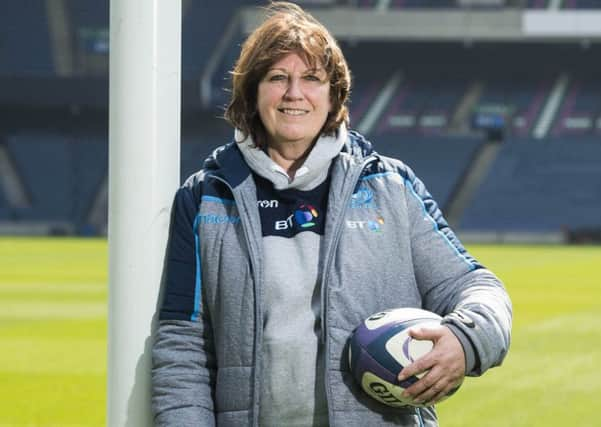Murrayfield shifts focus to clubs in bid to keep players in rugby


With the new part-time professional Super 6 league, which will see six clubs move into the elite programme in licence agreements with the union, the governing body is refocusing on the game below and has produced a draft document.
Sheila Begbie, the former Scotland footballer and administrator, is now the SRU’s director of rugby development in a change from the domestic rugby department she inherited from Keith Russell in 2017.
Advertisement
Hide AdAdvertisement
Hide AdA key component of the new strategy will see a “de-centralisation” of the SRU’s development programme into five regions which will be “auto- nomous areas with drawback to BT Murrayfield.”
Moving away from the old four districts, these “regions” will see Edinburgh, Lothians and Borders combined into one, alongside Glasgow North, Glasgow South, North&Midlands and Caledonia, and the North.
Each region will have five regional directors, with 12 regional managers and five coach development officers spread across the country.
Nationwide the SRU development team will be complemented by three schools and youth officers, funded by the “CashBack for Communities” proceeds of crime initiative, a women’s and girls’ development officer, five regional administrators and three competitions administrators.
Begbie said: “For me the whole thing we need to do is recalibrate our relationship with the clubs. Our regional teams being out there to support the clubs and to actively develop really good relationships.
“The role of the community or grassroots game is huge. Everyone, regardless of who you are, whether you’re a future Stuart Hogg or a Lisa Thomson or a Gregor Townsend, if you end up in high-performance your journey starts in our department.”
The wide-ranging draft document will now go out to consultation with member clubs, with perhaps the most challenging element being the proposed revamp of the national league system below Super 6 by 2021-22.
Begbie said she hoped lots of discussion and listening to the needs of clubs on how the season is structured will lead to a consensus, but she admitted there might “need to be some tough love in the room” to get the final sign-off.
Advertisement
Hide AdAdvertisement
Hide AdOther key parts of the new vision for grassroots rugby include a plan to bring in an extra age grade for girls’ rugby, which is currently played at Under-15 and Under-18 level.
The proposal is to change that to U12, U14, U16 and U18 in a bid to cut down on mismatches. Begbie said there was now confidence that playing numbers among girls had increased sufficiently to warrant a new layer.
On the vexed general issue of playing numbers, Begbie said that the results of the audit system known as “Scrums” should be out after the end of the season. The aim is to “cleanse data” which has meant the official World Rugby number of Scottish registered players from 2016 is plainly outdated. Against this backdrop, Begbie said the target of what she described as an “increased regional footprint” was the “retention” of existing players, not increasing playing numbers, with plans to facilitate players staying in the game.
“Clubs are the absolute heartbeat of our game and we need to make sure we support them,” Begbie added. “This new operating model helps us to deliver that.”